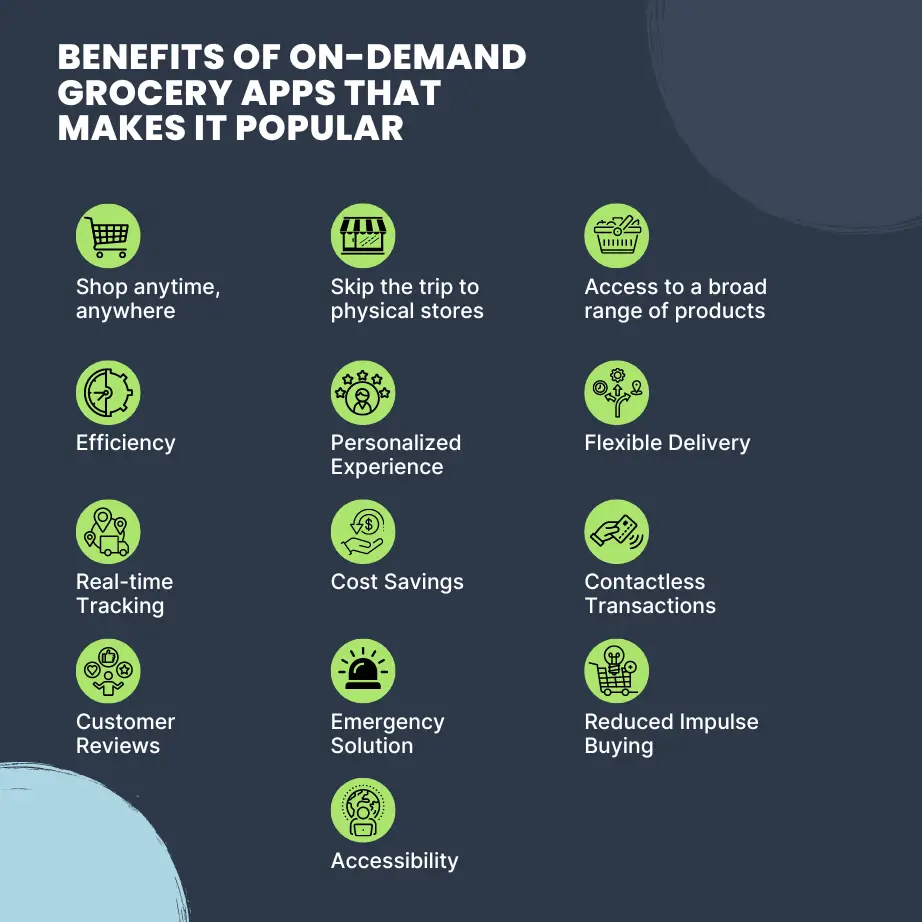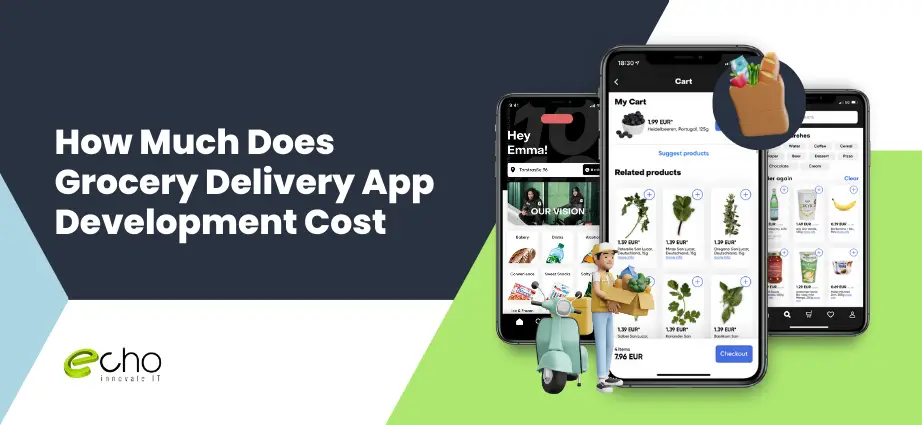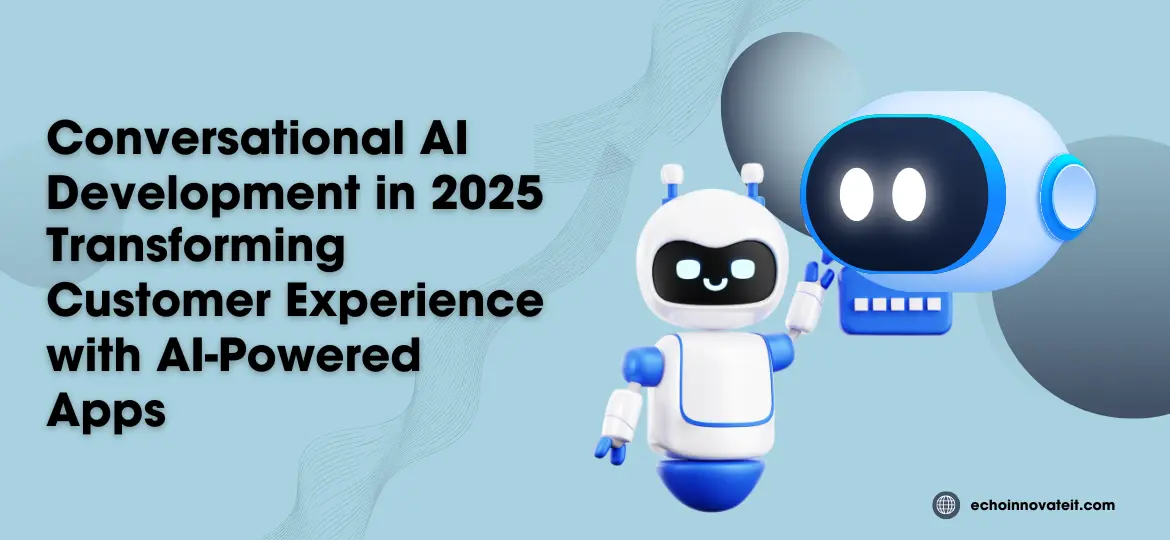Mobile technology has revolutionized how we live and shop. With just a few taps, users can listen to music, control smart devices, order food, and book tickets. Among these conveniences, grocery delivery apps have become essential for busy individuals. Instead of spending hours at supermarkets, users can now order groceries from the comfort of their homes. On-demand grocery delivery app solutions save time, reduce effort, and enhance convenience.
Top apps like Instacart, Peapod, Vons, FreshDirect, Blue Apron, and Purple Carrot lead the market in the USA. If you’re planning to build a grocery delivery app, it’s important to understand the grocery delivery app development cost in the USA. Many startups and businesses ask, “How much does it cost to develop a grocery delivery app in the USA?” or “What is the grocery app development cost in the US?” The answer depends on the features, design complexity, and platform choices.
Hiring a reliable mobile app development company can help you manage the grocery service app development price in the USA while aligning your product with evolving user needs. Whether you’re building an MVP or a full-scale solution, understanding the cost to build a grocery delivery app in the USA is the first step toward launching a successful product.
Let’s dive deeper into this article to explore the complete breakdown of on-demand grocery app costs in the USA, including platform-specific pricing and a USA vs. International app development cost comparison. With the right strategy, you can launch faster, serve better, and earn more.
Market Leaders In The Segment Of Grocery Delivery Apps
Let’s have a look at the apps for delivering groceries that have made it large in recent times catering the best services with a difference.
InstaCart
The grocery delivery app serves 5500 cities across the USA with more than 25,000 stores. More than 500 million products are delivered by this popular app for grocery delivery at variable costs with a same-day delivery window. The app has performed outstandingly during the latest pandemic in fulfilling grocery needs as early as possible, which has doubled the Instacart app downloads in less than 2 months.
Gorillas
Gorillas lead the position in faster grocery delivery services in less than 10 minutes. The platform enables grocery delivery through bike drivers with groceries packed in a paper bag. The faster delivery at a nominal cost is made possible through the distribution center and multiple dark store development, but it has a limited product range and geographical area.
Getir
Turkey-based grocery delivery app launched by a Turkish entrepreneur in 2015 picked up the pace and scored high popularity with expansion in London, Paris, Germany, and UK cities. Post-acquisition of BLOK- an online grocery firm, the mobile app made inroads into the Spanish market with 3.5 million active users. The faster delivery window is 10 minutes with less than £10 fees brings it in limelight worldwide.
Shipt
The USA-based mobile grocery delivery app has transformed the way users shop, serving over 50,000 customers nationwide. By partnering with major retailers like Target, Costco, and Whole Foods, it provides a seamless experience where shoppers can order everything from fresh produce to household essentials within one platform. Its smart reordering feature allows users to repurchase previously ordered items in one click or request unavailable products — increasing convenience and satisfaction.
This success story reflects the rising demand for efficient delivery solutions and raises a key question for entrepreneurs: How much does it cost to develop a grocery delivery app in the USA? The grocery delivery app development cost in the USA depends on features, platform, and development scope. Whether you’re looking into the grocery app development cost in America, the cost to build a grocery delivery app USA, or planning a basic grocery delivery app MVP cost US, clarity on expenses is crucial.
Understanding the grocery service app development price USA can help you align your budget and avoid overspending. This article explores the complete supermarket delivery app development cost US, offers a USA vs International app development cost comparison, and breaks down platform-wise grocery app cost in the US to guide you through every step of building a scalable solution.
Jiomart
The brainchild of one of the largest companies in India – Reliance Industries, Jiomart leverages the extensive network of mom and pop stores spread across India and acts as a medium between the retailer and the customer. Within a short period of time, Jiomart has emerged as the largest online grocery retailer in India. The reason for its phenomenal success is that it already had a pretty good offline presence in the form of its Reliance Fresh grocery stores.
BigBasket
BigBasket.com, owned by the Tata Group and backed by Alibaba, is a leading full-service grocery delivery platform. It offers a wide range of supermarket goods, home essentials, and food items directly to consumers. What sets BigBasket apart is its ability to manage procurement, storage, and last-mile delivery while maintaining a high level of personalization. Timely delivery and customer-centric features have helped the brand build trust and long-term loyalty.
As businesses look to replicate this success in the U.S. market, many are asking, how much does it cost to develop a grocery delivery app in the USA? Understanding the grocery delivery app development cost USA is key for startups aiming to build scalable platforms. The cost to build grocery delivery app USA can vary based on features, design complexity, and tech stack. Whether you’re launching a minimum viable product, the grocery delivery app MVP cost US, or a fully-featured platform, knowing the grocery service app development price USA helps make informed decisions.
This article provides insights into the grocery app development cost in the US, offers a detailed USA vs International app development cost comparison, and breaks down the platform-wise grocery app cost in the US. For those targeting broader markets, we also compare the grocery app development cost America-wide and estimate the supermarket delivery app development cost US entrepreneurs should plan for.
Grofers
Founded by two IITians, Grofers is an on-demand grocery delivery platform that started as a facilitator between shopkeepers and customers. But over time it realized that it needed an inventory-based model. Today, it has its own warehouses at certain strategic places and follows a model similar to that of BigBasket. Grofers focused on hyper-local delivery and this was the reason why it delivered goods much faster than others.
Amazon Fresh
Amazon Fresh is a subsidiary of the American e-commerce company Amazon. The online retail giant Amazon has forayed into the lucrative grocery delivery market by launching its service Amazon Fresh. Amazon has one of the best logistics and supply chain solutions in the nation and this is one of the major reasons why Amazon Fresh is touted as one of the top grocery delivery service providers in the sector. They have also beta launched Amazon Fresh Pickup, a drive-in-type grocery store for Amazon Prime subscribers.
Benefits Of On-Demand Grocery Apps That Makes It Popular

There are many benefits of on-demand grocery apps for customers and app owners:
For customers
It Is Time-Saving
Indeed, our lives are hectic and stressful nowadays. Millennials use technology that makes their lives more comfortable and convenient. When you develop a mobile app for grocery delivery, it saves a lot of time for the users especially with the 10-minute grocery delivery apps.
It Is Convenient
Users can place an order from anywhere, irrespective of location. All they need is their smartphone with an internet connection. It is comfortable, easy to do, and streamlined. Doorstep grocery delivery saves a lot of time for users which they can utilize in doing productive things.
It Prevents Overshopping
One of the most common traits of visiting the mall or a grocery shop is that shoppers end up purchasing items that are not on their shopping lists. It is a temptation issue. With a grocery delivery app, users can avoid it.
It Saves Money
On-demand grocery delivery apps come up with many exciting promotional offers, gift coupons, and discount deals from time to time. Festival season offers, loyalty programs, and discount coupons are money-saving schemes offered to customers to lure them. It helps to make them their regular shopper.
Quick And Secured Payment Processes
Users can pay for their groceries online while placing an order with a safe and hassle-free payment process. User can choose from various online payment modes such as credit cards, debit cards, UPI, and others. Many apps offer cash-on-delivery payment options too. Users can pay online or offline when the ordered items are delivered to their doorsteps.
For Grocery business
Improve Sales By Connecting An Offline And Online Store
If you are selling groceries from the local store, then you must complement the grocery store with a grocery delivery mobile app. The backup of mobility solutions helps you to automate business operations, follow current trends, and stay above the competition. As your local customers can find you online they are likely to connect and trust you more as well.
Go Mobile Without Spending A Lot
Developing an on-demand grocery app is a smart choice for startups aiming to enter the market without overspending. By starting with a grocery delivery app MVP, entrepreneurs can launch a functional product with essential features and test user demand. This approach significantly reduces the grocery service app development price USA and minimizes operational costs in the early stages. For many, the grocery delivery app MVP cost US is a more viable option compared to a full-scale build.
Another cost-effective option is choosing an Instacart-like clone app, which mirrors the core functionality of leading platforms at a lower price point. Even if you later upgrade to include advanced features, your total spending will still be less than developing a custom app from scratch. It’s crucial to understand the cost to build grocery delivery app USA and compare it with clone-based solutions.
In this article, we explore the grocery delivery app development cost USA, provide a detailed platform-wise grocery app cost in the US, and discuss the USA vs International app development cost comparison. Whether you’re curious about the grocery app development cost America, the supermarket delivery app development cost US, or planning a scalable solution, understanding these cost factors is essential for long-term success.
Make Grocery Delivery- A Time-Savvy Process
Handling a large user base for grocery delivery requires the investment of a lot of time and resources. The on-demand solution, be it a custom or clone of a popular grocery delivery app, brings efficiency to the services with the convenience of handling customers and grocery delivery with ease.
Increase User Outreach
When you are operating a physical grocery store, the user reach is based on personal relationships or word-of-mouth publicity. On the flip side, the on-demand application takes your grocery delivery services to the world and helps you gain access to a wide range of audiences without any geographical restrictions.
Level Up Your Marketing Efforts
The on-demand grocery delivery solution development means increasing reach to the global user base and online channels provide a myriad of opportunities to market products/services at a comparatively lesser cost. Also, digital channels enable the business market to their offerings to targeted audiences and have the flexibility to gain insights into users’ behavior.
Various Approach For On-Demand Grocery Delivery Business Models
There are four types of on-demand grocery delivery apps in the market. We will discuss each one of them in brief:
Grocery Stores Aggregators
In this category, a user will find a list of grocery stores located near them. First, a user will select a store and from the menu, the customer will add products that it wants to buy. Then, the customer completes the payment process; a store will confirm the order and the store delivery boy will deliver the order to the user’s home. It is an aggregator app model where you act as a mediator between the user and the store owner. Even the delivery liability is of the store owner and not the platform owner.
Grocery Delivery Marketplace
It is quite similar to the aggregator app model with one significant difference. Here, the marketplace owns a delivery network to deliver products to the users.
Single Store Model
Here, a grocery store is also a platform owner and is responsible for everything from maintaining the app for updating the menu to delivering the products to the end users. It owns an on-demand grocery delivery app that facilitates users to browse items and place orders.
Grocery Chains
When a grocery store has multiple stores, it develops an app to offer online grocery shopping services to users. It is, to some extent, similar to a single-store model.
Grocery Delivery App Development: Developmental Process
If you plan ahead of time, creating an on-demand grocery delivery app will be a breeze. Experts advise creating a Product Requirements Document before beginning. The easy steps for creating a mobile app will help you construct a successful app that is user-friendly and generates the profit you seek. The primary development process is separated into six steps, as illustrated in the graphic below:
Plan
The first stage focuses mostly on the theoretical aspects of the process: ideation, investigation, and discovery. However, don’t be confused: conceptualizing is just as vital as coding. Let’s examine what you should do at this point.
Design
Grocery app development begins once the concept has been refined. You share all of your earlier observations with the design team. This is what UI/UX professionals will accomplish.
Build
We believe that the most effective way to bring a fresh concept to life is to first develop a minimal viable product (MVP). An MVP is a stripped-down version of a program intended to demonstrate its primary functionality.
Test
Establish clear lines of communication with your audience and listen to what they have to say. Keep in mind that not all input is beneficial, and some may even be counterproductive; instead of attempting to adopt every single recommendation, concentrate on identifying the most essential trends in the comments you get. Once you’ve sorted the incoming flow, begin applying the suggestions that appear most frequently.
Launch
It seems like it’s time to write some code. The most crucial element here is to ensure that your engineers are skilled professionals who understand what they’re doing; nothing irritates users more than broken software. Cross-platform development is the preferable option for reaching a large audience, which entails coding for both Android and iOS at the same time.
Also Read:
How Do Grocery Delivery Apps Make Money?
Every delivery app has its revenue source. An on-demand grocery delivery app can generate revenue in a variety of ways, as shown below:
Upcharges For Products
A platform owner typically charges more than the actual price for some things.
Delivery Charges
Most grocery apps charge additional fees for delivery services. However, they can provide free delivery to users that reside close.
Commission From Orders
A platform owner can request a particular amount of commission from a grocery store owner for each order placed through the app.
Premium Advertising Services
Highlight a specific grocery store in the app and charge a specified amount for it. It does not apply to the warehouse concept.
Third-Party Advertising Services
Allow third-party advertising services to place ads in the grocery delivery app.
How Much Does Grocery Delivery App Development Cost?
The grocery delivery app development cost in the USA typically ranges from $10,000 to $25,000 for a basic version. However, the actual cost to build a grocery delivery app USA depends on several key factors, including platform choice, feature complexity, app size, and the technology stack used. If you’re wondering, how much does it cost to develop a grocery delivery app USA, the answer varies based on whether you opt for an MVP or a custom solution.
For startups, launching with a grocery delivery app MVP cost US can significantly reduce initial expenses while testing the market. Meanwhile, larger businesses may consider investing in more advanced features, impacting the total grocery service app development price USA. Working with a professional app development company ensures that all requirements are carefully evaluated, helping you estimate the most accurate supermarket delivery app development cost US.
This article also explores the grocery app development cost America-wide, provides a USA vs International app development cost comparison, and breaks down the platform-wise grocery app cost in the US to guide your budget planning and development strategy effectively.
Also Read:
Conclusion
On-demand grocery delivery apps are in demand, and you should always start locally and gradually expand to multiple regions. However, developing such an app is a tedious and challenging task, but becomes a plain sailing journey when you hire dedicated developers. Also, the demand and supply ratio fluctuates randomly and so should be aptly scaled. There is no plethora of grocery delivery apps in the market yet, and it is a golden time for you to grab an opportunity. Keep your end user in mind and strategize accordingly to witness superior results. Address problems they face in their locality, offer solutions and you are ready to go.
Build An Amazing Grocery App With Echoinnovate IT
Make the process of Grocery Delivery App Development easy with us. Echoinnovate IT is a top App Development Company providing a wide range of custom services such as mobile app development, custom software development, web development, E-commerce development, iOS Development, and much more.
Launch an outstanding On Demand- Grocery Delivery Application With Us
Hire our experts today!
FAQs- Grocery Delivery App Development Cost
How long does it take to develop a grocery delivery app?
Development time can range from 3 to 9 months, depending on features and complexity.
Does app design impact the cost significantly?
Yes, a more sophisticated and customized design can increase development costs.
How can I reduce the development cost?
Prioritize essential features, choose a simpler design, and consider outsourcing to regions with lower development costs.



